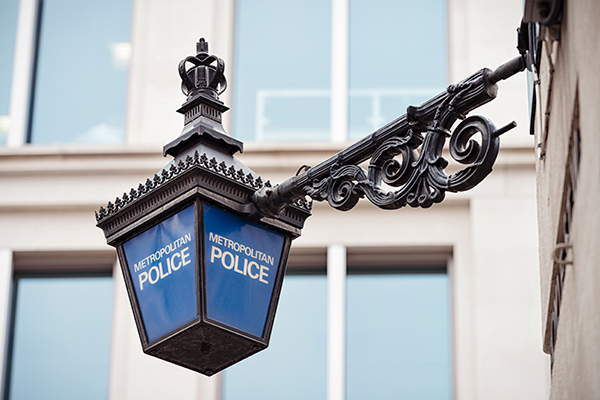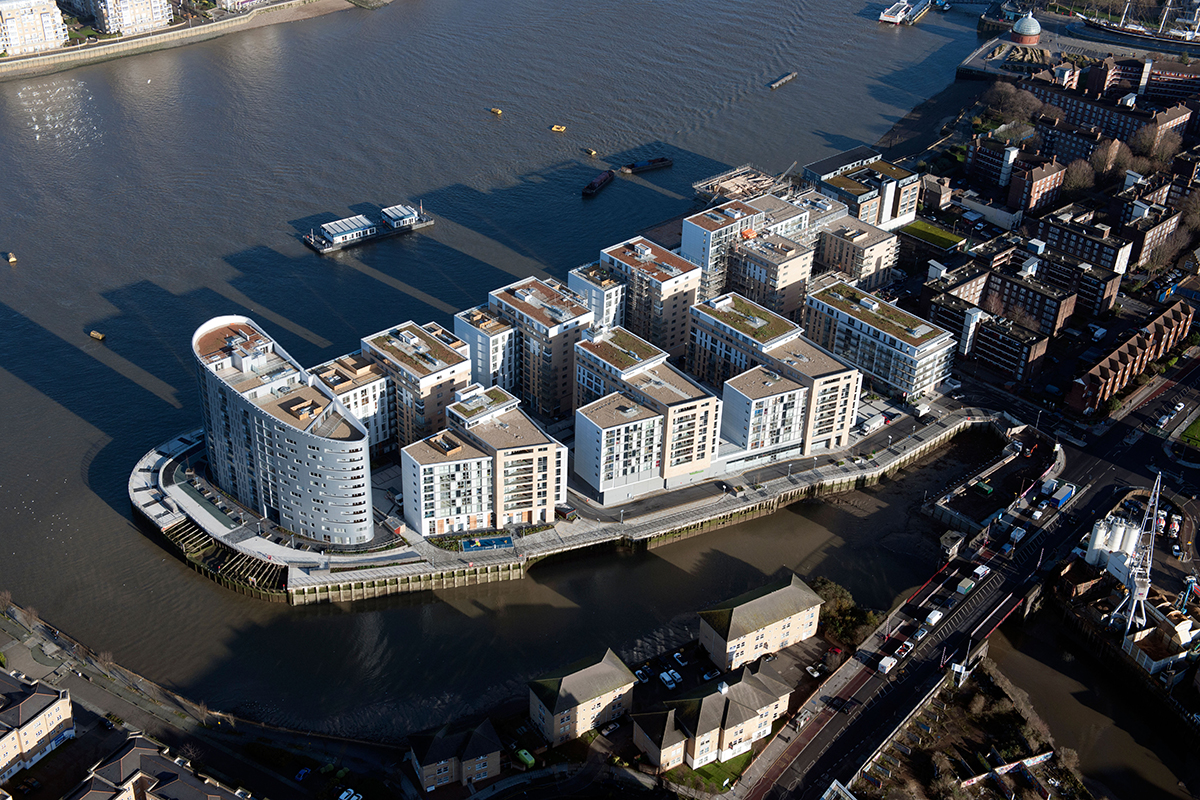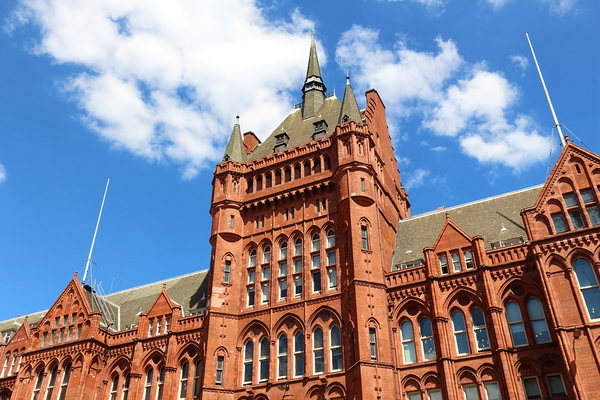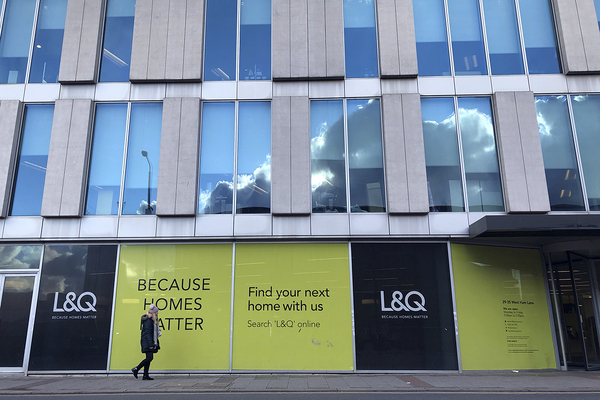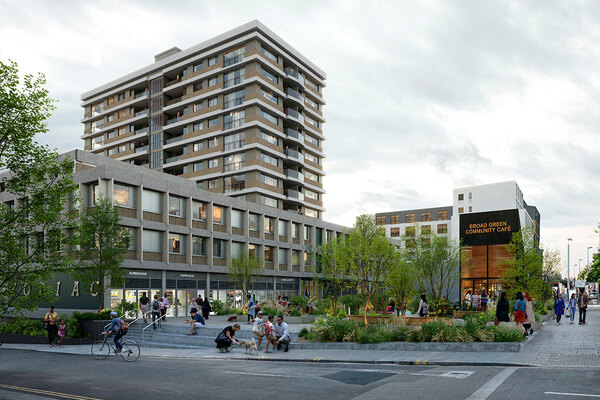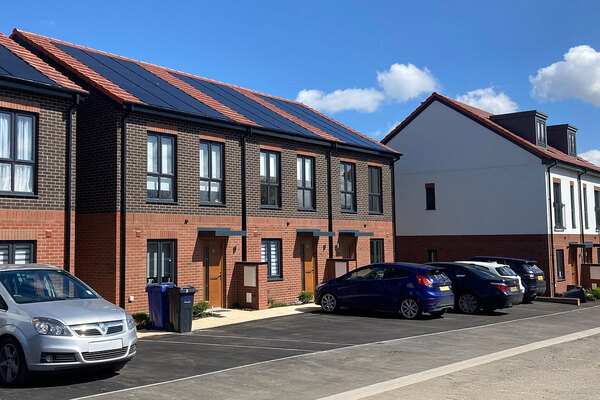You are viewing 1 of your 1 free articles
Grenfell Inquiry day 70: police evidence
The police officers in charge of the Metropolitan Police Service’s response to the Grenfell Tower fire on the night of the disaster gave evidence to the public inquiry today.
Key points
- One day of police evidence to Grenfell Tower Inquiry, discussing the police response on the night of the fire
- Officer in command on the ground feared “imminent death” due to building collapse
- Says allowing survivors back into tower would have resulted in “chaos and increased death”
Inspector Nicholas Thatcher, the duty officer for Kensington and Chelsea, appeared for questions in the first part of the day.
He was ‘silver commander’ for the police during the fire, meaning he was in charge of organising the force’s immediate response on the ground.
This included setting up a police cordon and organising for surrounding buildings to be used for casualties.
There were 226 Metropolitan Police officers on the scene in the first hour of the fire.
In a written statement for the inquiry, Mr Thatcher said: “All of my actions and decisions that night were taken against the backdrop of imminent death – all the time I was within the area that was eventually cordoned I fully expected the building to collapse resulting in my death and the death of the officers and public around me.”
Mr Thatcher declared the blaze a major police incident while on his way to the fire after seeing a flame shoot outwards and “directly up the side of the building as far as the roof”.
By the time he arrived at Grenfell Tower, he said the entire south side of the building was completely alight and that there “was a constant rain of burning objects coming from the top and sides of the building, some looked small, some seemed to be large and rectangular”.
He said today that he has “no idea” how the tower did not collapse – and that the sound of debris coming from the building was “like a cliff coming down”.
Because of his fears about collapse and to clear space for fire engines and ambulances, Mr Thatcher said he set up a police cordon to keep members of the public away from the tower, with some bereaved people allowed through.
He described the difficulty of keeping people back with limited numbers of police officers and said some officers were spat on or verbally abused by people in the crowd.
But he said if people had been allowed to enter the tower there would have been “chaos and increased death”.
In a second witness statement, he said: “Throughout the night the crowd were exhibiting the whole range of human emotions from despair to rage and this made it almost impossible to deal with them as a whole entity as each individual had a different need and so needed to be treated accordingly.”
Mr Thatcher told the inquiry he ordered that the nearby blocks of Barandon Walk and Treadgold House be evacuated – including by using battering rams to check flats – over fears about flaming debris blowing towards them from the tower.
And he said that one of his officers broke down a door to a sports centre for use as a morgue after the police were unable to get keys from Kensington and Chelsea Council.
He described the scene by the tower during the night as “like a Hollywood movie”.
“I remember wondering why the tree I was by was not bending in the strong wind I could hear. Then I realised it was not the wind but screams from all around,” he said.
Finishing his evidence, he paid tribute to the work of the local community in the wake of the fire.
In the second part of today’s evidence, commander Neil Jerome gave evidence.
Mr Jerome took over as gold commander at 4.10am, working from a “special operations room” in Lambeth, south London.
He was told there were already at least four people dead by this time.
Many of the questions to Mr Jerome related to 999 calls fielded by call handlers working for the Met.
Documents released today show that advice to residents about whether to stay put or attempt to leave changed throughout the night.
One call handler also told a resident to try to get the attention of the police helicopter above the tower – despite the fact that it was being used to capture thermal images and not to rescue people.
Mr Jerome defended call handlers and the circumstances in which they were operating, but said he did not know why a 999 operator said this.
The Grenfell Tower Inquiry
Closing statements
Day 85: victims' lawyers attack the fire brigade
Further expert evidence
Including some additional evidence from emergency call handlers, bereaved and relatives
Day 84: further evidence from survivors and relatives
Day 83: swift evacuation of tower possible if residents alerted
Day 82: initial fire was extinguished but then returned to the flat
Day 81: overheating fridge-freezer most likely cause of fire
Day 80: fire doors installed did not match product tested
Day 79: resident advised to stay put despite fire in flat
Day 78: insulation and cladding material below required standard
Day 77: molten plastic spread blaze down tower
Day 76: 'stay put' should be dropped when fire spreads across floors
Other witness evidence
Police, ambulance, gas suppliers, council, TMO and call room operators give evidence
Day 75: call room operators give evidence
Day 74: further evidence from TMO officers
Day 73: TMO boss failed to pass information to firefighters
Day 72: fire finally extinguished when gas switched off
Day 71: further questions over stay put advice
Day 70: the police evidence
The bereaved, survivors and relatives’ evidence
Day 69: video shows smoke billowing through fire door
Day 68: KCTMO removed self closing mechanism and never replaced it
Day 67: gaps in cladding fixed with duct tape
Day 66: 'don't fix broken system with a sticking plaster'
Day 65: survivor dragged disabled man down nine floors to safety
Day 64: KCTMO 'did not replace broken fire door'
Day 63: foam insulation inside cladding 'exposed' says survivor
Day 62: father gives harrowing account of son's death
Day 61: council’s management organisation slammed for faulty electrics
Day 60: stay put advice ‘led to deaths’, residents say
Day 59: residents describe problems with new windows
Day 58: survivor describes how daughter saved his life
Day 57: firefighter evidence ‘a slap in the face’, says survivor
Day 56: relations with contractor were ‘toxic’
Day 55: resident 'never happy' with stay-put advice
Day 54: tenant gives evidence about housing association
Day 53: stay put advice 'felt like trap'
Day 52: resident saved by son's phone call
The firefighters’ evidence
Day 51: firefighter feared encouraging residents to jump
Day 50: the LFB commissioner
Day 49: fire chief reveals frustration over lack of building plans
Day 48: internal fire spread 'bigger story' than cladding
Day 47: fire officer considered evacuating crews over building collapse fears
Day 46: 'we were improvising' senior firefighter admits
Day 45: firefighter urged for abandonment of 'stay put' policy
Day 44: firefighter recalls radio signal difficulties
Day 43: call hander 'uncomfortable' with insisting residents stay put
Day 42: residents only told to leave if they called fire brigade back
Day 41: breathing equipment delay 'hampered rescues on upper floors'
Day 40: chiefs told firefighters to abandon policy
Day 39: firefighters reveal dramatic rescue of children
Day 38: firefighters issue aplogies to families
Day 37: council 'unable to provide tower plans'
Day 36: QC defends inquiry process
Day 35: Javid would welcome interim recommendations
Day 34: water from hose 'too weak' to reach the flames
Day 33: 'oh my god, we've been telling people to stay put'
Day 32: further fire fighter describes lack of equipment and low water pressure
Day 31: 'incredibly difficult' task of recording information outlined
Day 30: struggle to maintain control over rescue operation described
Day 29: fire service 'overwhelmed' by survival guidance calls
Day 28: 'the building beat us'
Day 27: firefighters 'forced to abandon plans to reach roof'
Day 26: poor signage hindered rescue efforts
Day 25: water pressure left firefighting equipment 'like garden hose'
Day 24: decision to abandon 'stay put' explored
Day 23: TV images 'could have assissted' rescue effort
Day 22: description of hectic scenes in the control centre
Day 21: account from the fire service 'nerve centre'
Day 20: firefighter describes 'huge volume' of calls from trapped residents
Day 19: firefighter 'given no training on cladding fires'
Day 18: evacuation would have been 'huge catastrophe'
Day 17: firefighters describe access and lift issues
Day 16: scenes of carnage likened to 9/11
Day 15: firefighters recount trauma of survival guidance calls
Day 14: firefighters describe spread of blaze
Day 13: firefighters recall radio difficulties
Day 12: "it was like a war zone"
Day 11: questions raised over fire fighters' radios
Day 10: watch manager emotional under questioning
Day nine: lead firefighter 'not trained in stay put policy'
The expert reports: authors give evidence to inquiry
Day eight: where the fire started
Day seven: what was in the cladding?
Day six: the cause and spread of the fire
Day five: expert highlights key issues
Day four: firefighters defend response to fire
Day three: council and contractors appear for the first time
Day two: lawyers for the survivors make their case
Day one: expert evidence released on cladding and stay put
The commemoration hearings
30 May: Grenfell Council 'recognised it should not house disabled victim above four storeys'
29 May: Anger on day six of the Grenfell Inquiry
25 May: Grenfell families 'forced to live in chimney with stay put policy'
24 May: Grenfell family complained about father being housed on 17th floor
23 May: Tributes to children on third day of Grenfell hearings
22 May: Emotions run high as Grenfell bereaved shown footage of the tower burning
21 May: Grenfell victims share tributes as inquiry opens
